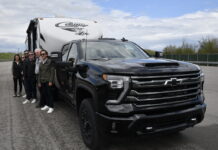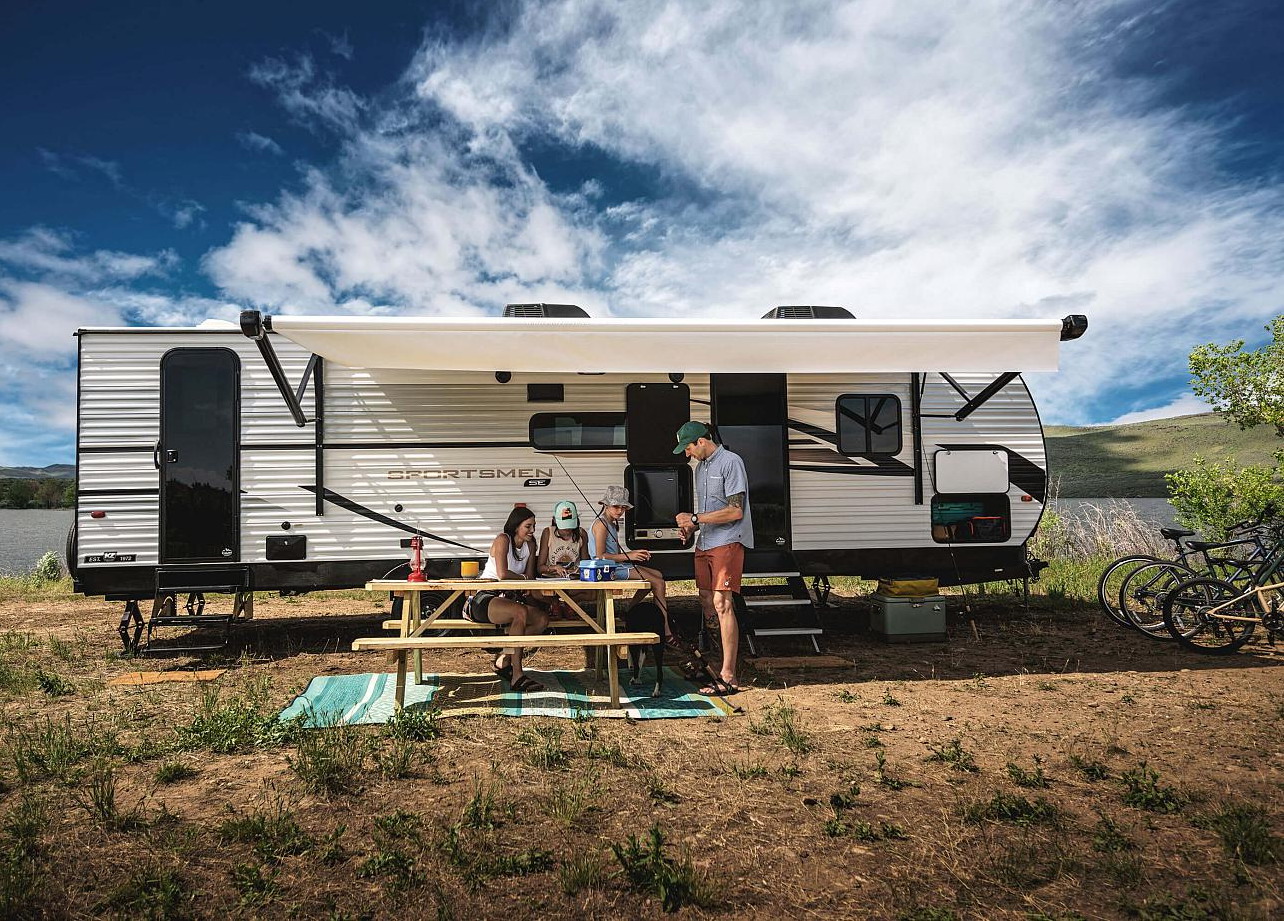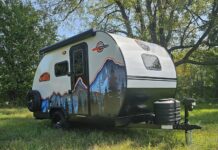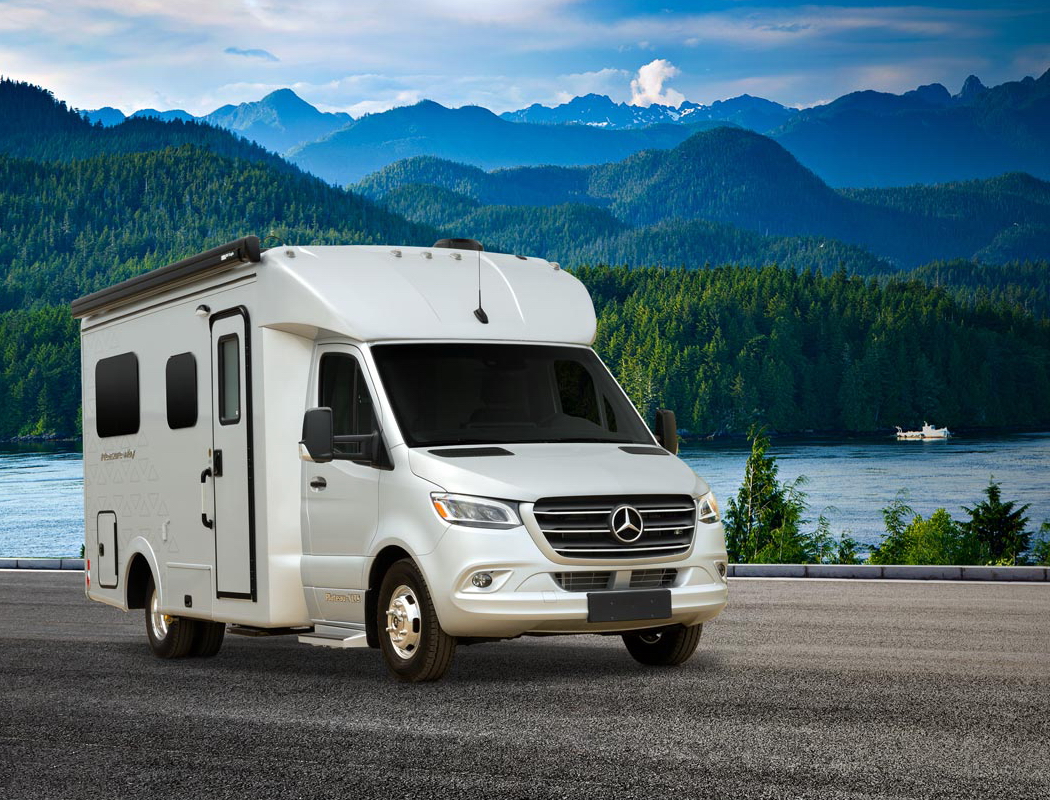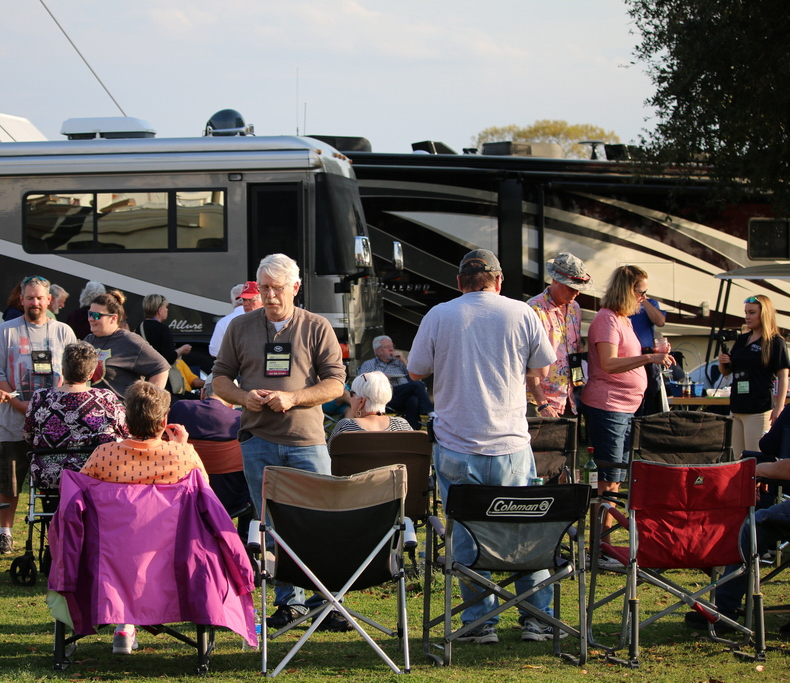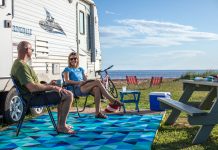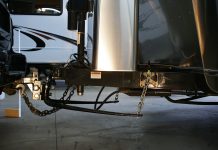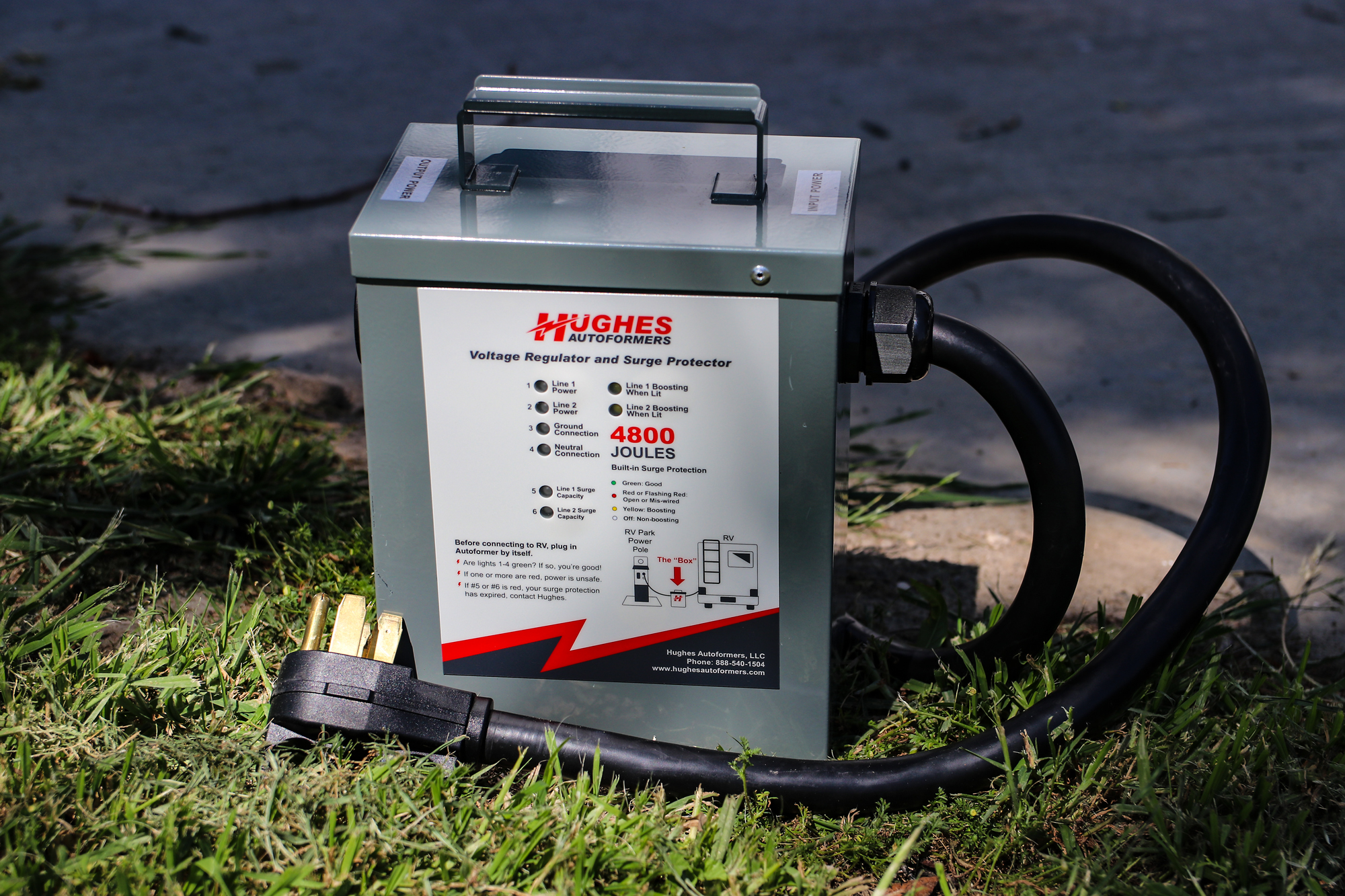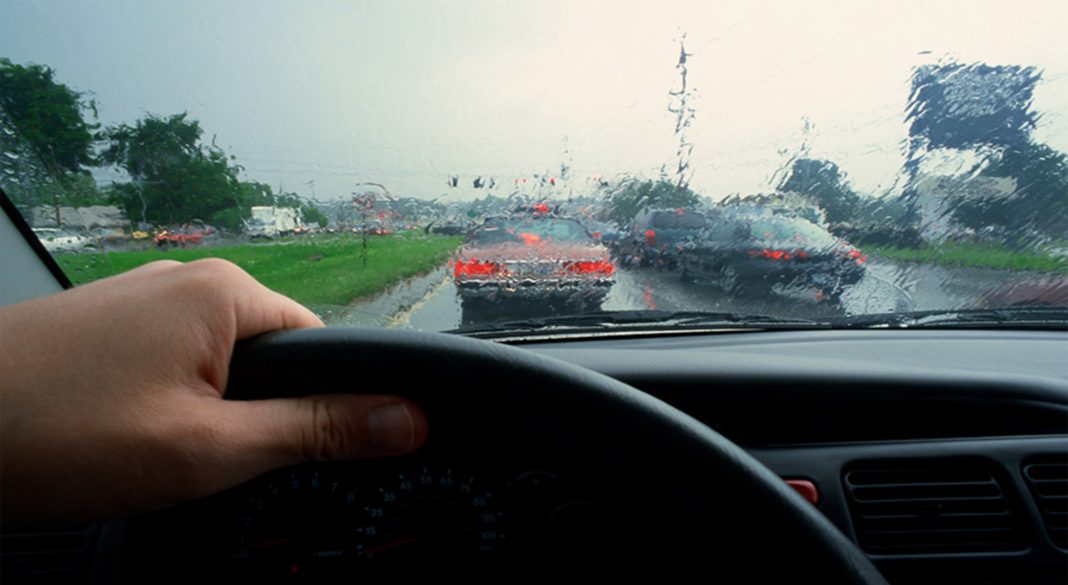Driving in the Rain
By Garth W Cane
Whether you anticipate rain along your route, or find yourself caught in a downpour, driving in the rain is always a challenge – driving a motorhome or towing a trailer in the rain is an even greater test of your skill and wisdom… here’s how to make sure you are as safe as possible when the road conditions are far from ideal.
Before you leave the campground, it is time to check that all your lights are working. Turn on the four-way flashers and walk around the RV. If the four ways are working, then you know that the turn signals will work to allow vehicles following to know what you intend to do. Have your partner step on the brake pedal. Are all your clearance lights working? Don’t forget all the clearance lights on you trailer. They will allow some one travelling behind you to see you in a heavy rain.
Modern cars and trucks have daylight running lights activated when the engine starts, that allow oncoming travellers to see you under poor lighting conditions. Many American cars and older motorhomes do not have this feature. Most states require that when the windshield wipers are on, the full headlight system must be on, including the tail lights so that others can see you from behind. Some daylight running light systems do not turn on your rear clearance lights. Pull the headlight switch towards the steering wheel to switch to low beam. This prevents your headlights from bouncing back off the rain. This is more important when fog starts to roll in.
Did you clean your windshield to remove the bugs from yesterdays drive? Most drivers do not think of cleaning the inside surface and it develops a thin coating. This was more evident when people smoked in their vehicles. When it rains the temperature on the inside of the windshield will often be warmer than the outside surface causing fog to impair your vision of the road ahead. When this happens, turn on your defroster to evaporate the moisture.
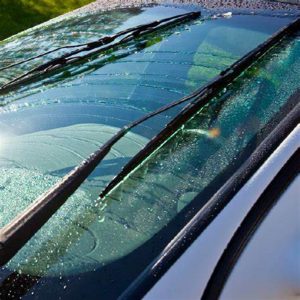
Wiper Blades need TLC…
When was the last time you replaced your windshield wiper blades? Old wiper blades do not clean the window properly. Over time, the rubber surface deteriorates and causes streaks. If your vehicle stands outside in the winter, and the wiper blades freeze to the windshield, when you turn on the wipers the ice will often rip sections of the blade so that it will not clean properly.
A good time to change your wiper blades is when your get an oil change. We use Rainex, a synthetic hydrophobic product that causes water to bead up and run off the windshield.
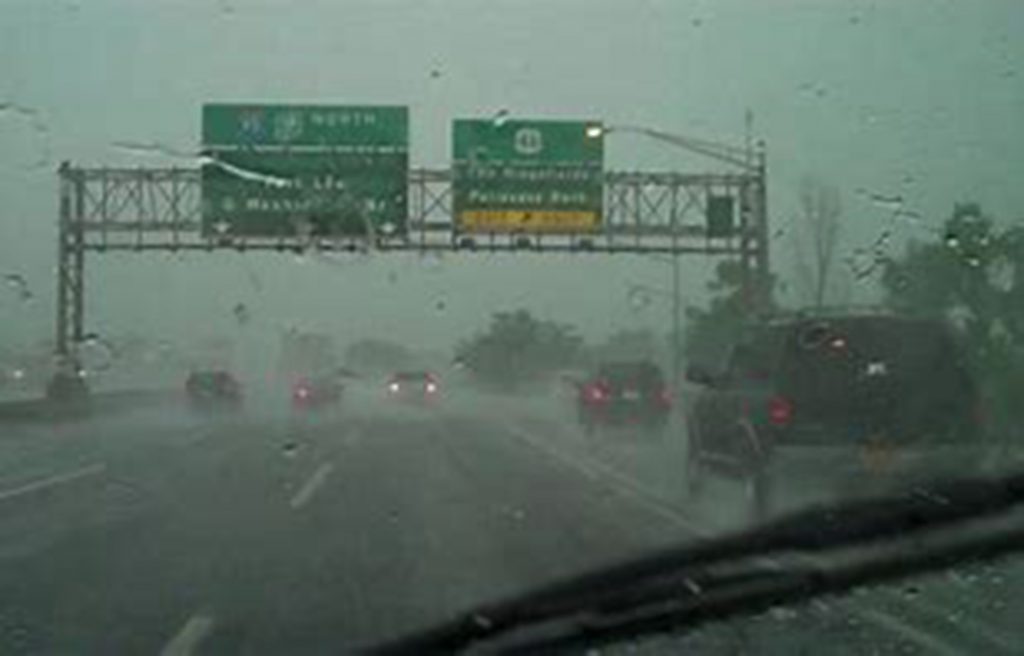 During one hard rainstorm in Tennessee, the wiper arm on the drivers side broke off and Rainex saved the day as we were able to continue until we found a safe place to pull off the road.
During one hard rainstorm in Tennessee, the wiper arm on the drivers side broke off and Rainex saved the day as we were able to continue until we found a safe place to pull off the road.
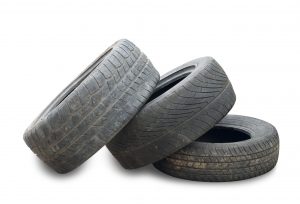
How’s your tire tread?
Before every trip, check your tires for tread wear and replace tires that show signs of wear or other visible issues. You should check the depth of the tread on your tires using a dime. Tires have wear bars molded into the tread surface, when these show, it is time to go to your friendly dealer. According to most manufacturers, and stipulated in the law in most provinces, your tires should be replaced
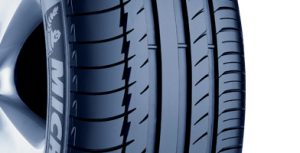
when the tread depth decreases to 4/32” in the winter and 2/32″ in the summer. If your tread depth wears to those levels, your tires are considered bald and a safety hazard. Tires at or above the recommended tread depth level can give you better traction, reduce risk of punctures and push away water to help you avoid hydroplaning on wet roads.
Be Aware of Traction Conditions!
Your tires are the only contact you have with the road. That is about eight inches square on each of your four tires. The surface of your tire has grooves to help water to escape. When excess water sits on top of the road, tires can lose traction and hydroplane causing your vehicle to slide uncontrollably. It doesn’t take much – driving 35 miles per hour or faster with as little as one-twelfth of an inch of rain on the road makes any type of car, SUV, truck, or four-wheel drive at risk for hydroplaning
When this happens to you – Slow Down Gradually – begin by taking your foot off the gas pedal to allow the vehicle to slow down. Then slowly begin steering in the direction you are hydroplaning until you have control. Seems contradictory, but this actually helps your tires to realign with your vehicle – so they are both going the same direction. Do not make any sudden changes in steering, do not apply the brakes, and do not try to go faster. Don’t jerk the wheel or you could flip your car due to over-correcting.
Additionally, you’ll want to check your tire pressure and ensure that each tire is properly inflated before you get out on the open road. Many vehicles today have TPM (Tire Presssure Monitor) systems.
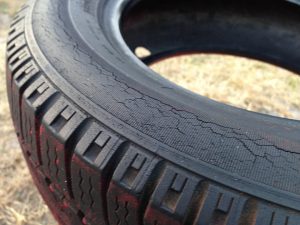
Are Your Tires Too “Tired” to Drive?
Tires are subject to UV deterioration. When your tires are five years old, look them over for signs of wear and cracks on the sidewalls. If they are 10 years old, they must be replaced. Trailer tires do not wear out, they age out.
Wet roads can be the most difficult to drive on. The grease and oil from cars and tractor trailers produces a film on roads during dry conditions, and when it rains this “tire dust” becomes extremely slippery.
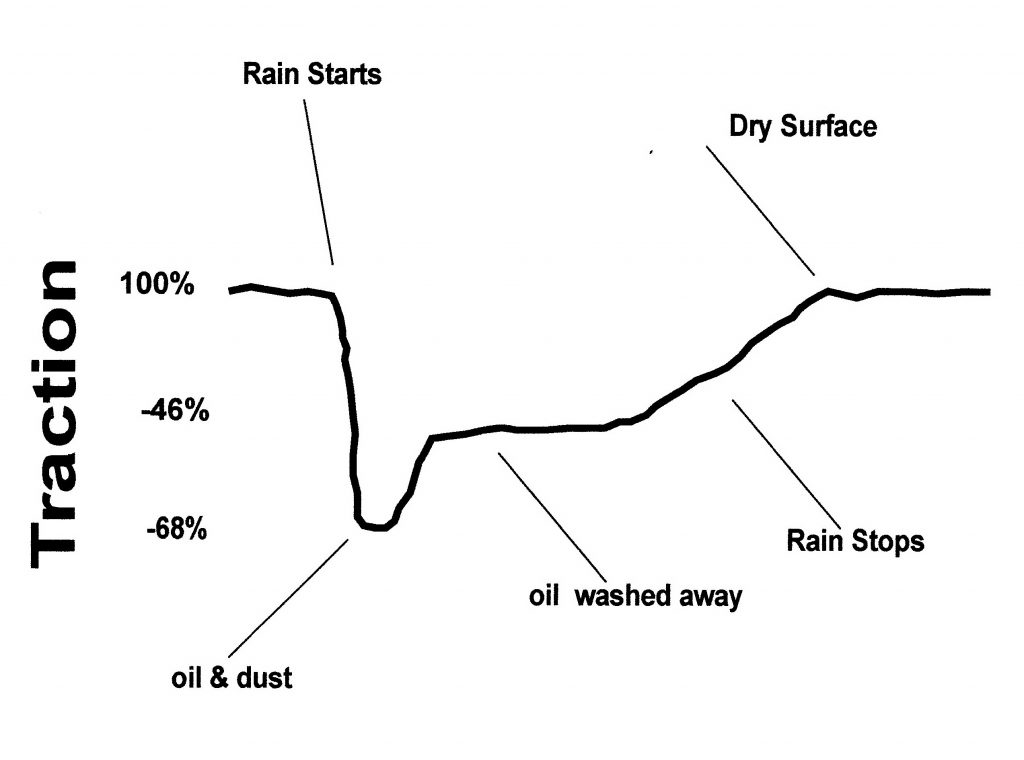
As soon as it starts raining, your tires begin to lose contact with the road. For the first fifteen minutes after rain starts, friction between the tires and the road will lower quickly until the surface dries out. Drive defensively in the rain and reduce your speed below the limit to prevent the chance of hydroplaning. Add more distance between you and the vehicle in front of you.
Cruise control should never be used during the rain. If you begin hydroplaning while the cruise control is on, it will force you to go faster. It could take a second or two for the cruise control function to disengage allowing you to take control of your vehicle and slow down. Those seconds could be critical. Remember that you are not driving a car, your motorhome will top the scales and take longer to stop. To prevent your tires from skidding, Do not try to accelerate quickly, stop suddenly, or change direction in an instant. Slamming on your breaks only makes this worse and can cause you to fishtail.
When it starts to rain is a good time to slow down a bit, it is difficult to see when the rain is streaming off your windshield. Driving at night in the rain can be especially dangerous because of the glare of oncoming traffic amplified by the rain on your windshield. A police office told us that wearing sunglasses helps you to see the road, you don’t want to hit a pothole that forces your front wheels to jerk the steering wheel out of your hands. Always keep two hands on the wheel, you can drink that coffee later. Your speed should not exceed 55mph (90kph) and you should maintain at least three times your total length from the vehicle ahead. Paying close attention to what’s ahead will remove the need and temptation to slam on your brakes. Stay out of the passing lane, you are on a holiday and can take more time to get to your destination safely.
Many States and Provinces have minimum speed limits on major highways to prevent you from slowing the traffic around you. If you find everyone passing you, you are in the wrong lane and you should move over to the right and turn on your four-way flashers. Consider taking a two-lane road where there is less traffic or pull into a shopping center and have lunch. Sometimes when the rain is pouring, you can’t see a thing, and driving conditions simply are not safe no matter what you do. In these cases, just pull over.
In really bad weather, you may want to pull to the shoulder, turn on your hazard lights, and wait until the rain slows at least a little. Do not park under a highway overpass as this limits the amount of room for others to pass. Always look for a rest stop, truck stop, a Walmart, Cracker Barrel, Cabelas, or Camping World. All of these have spots big enough for most rigs, and most are happy to accept RVers.






